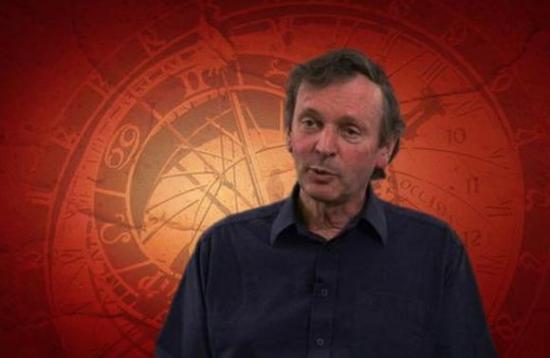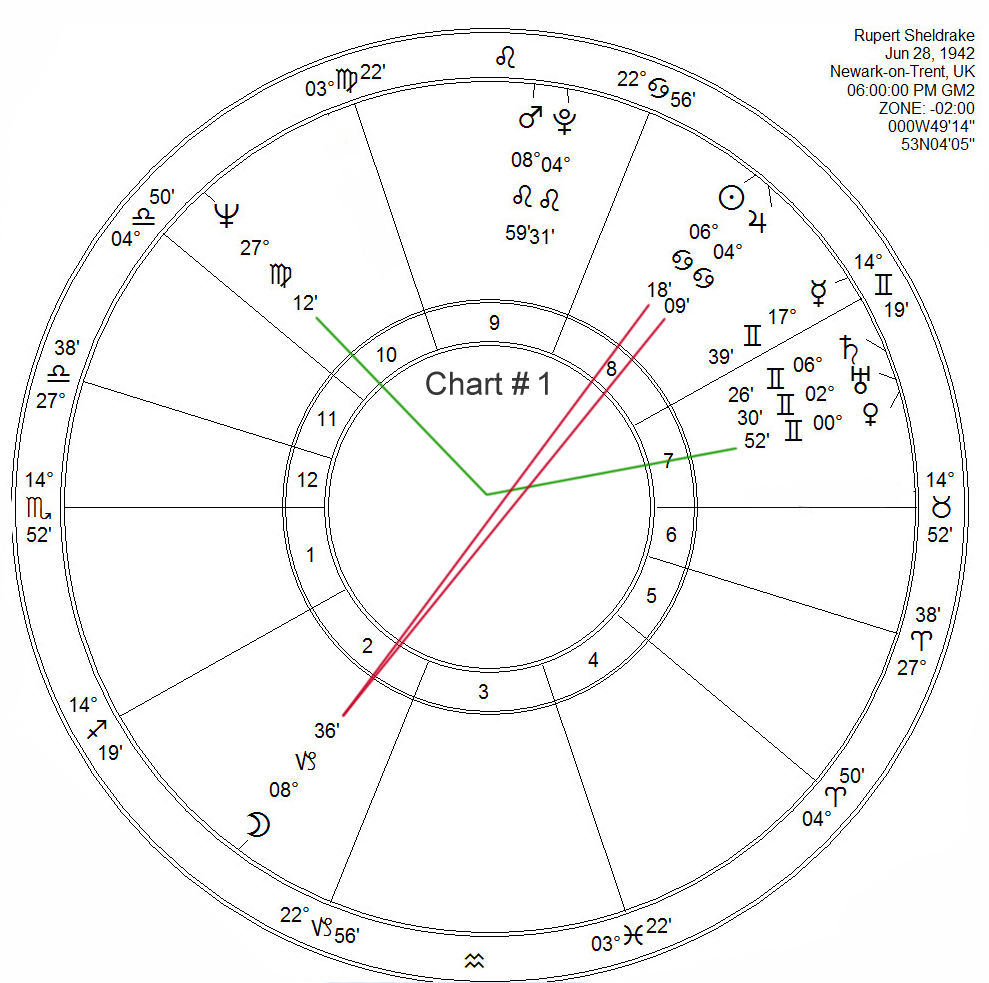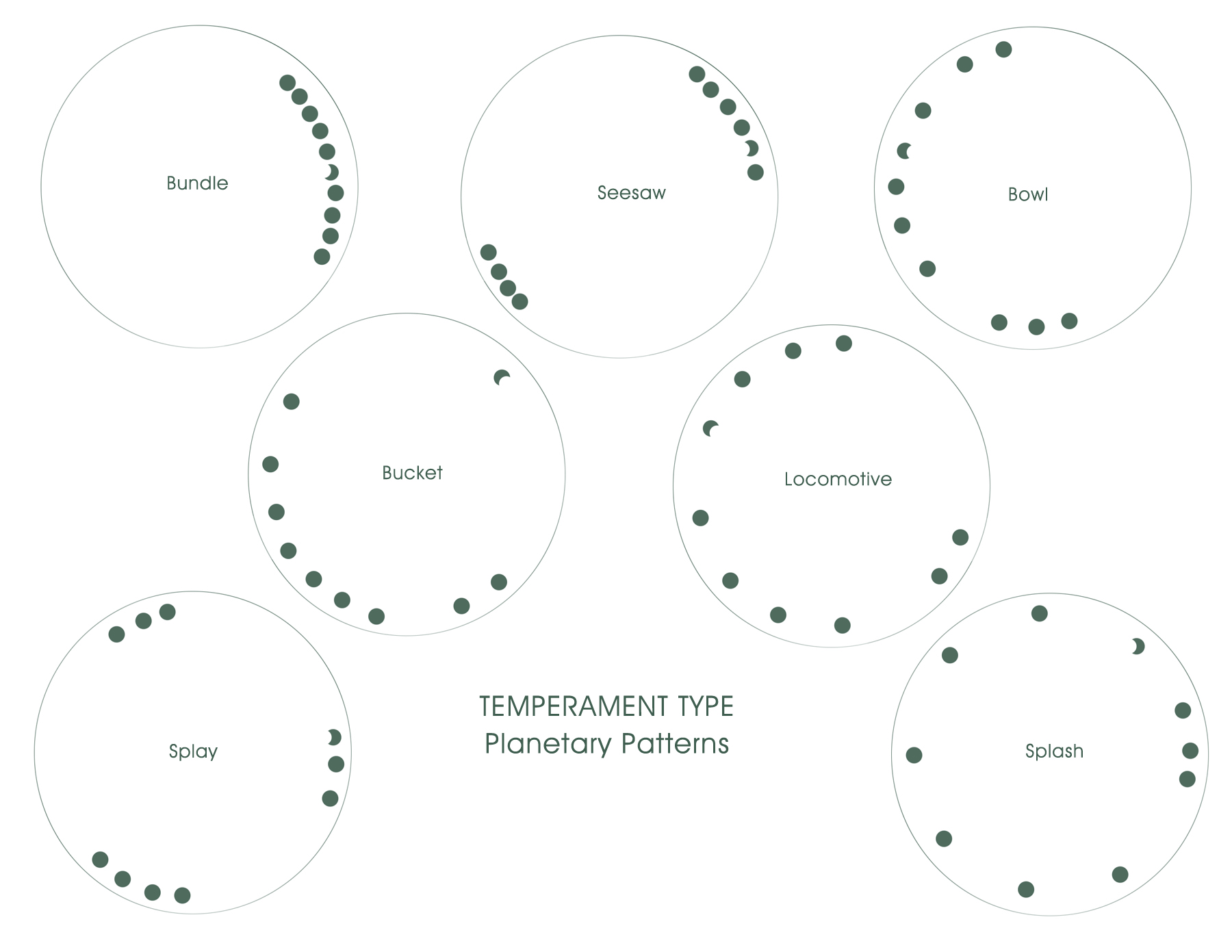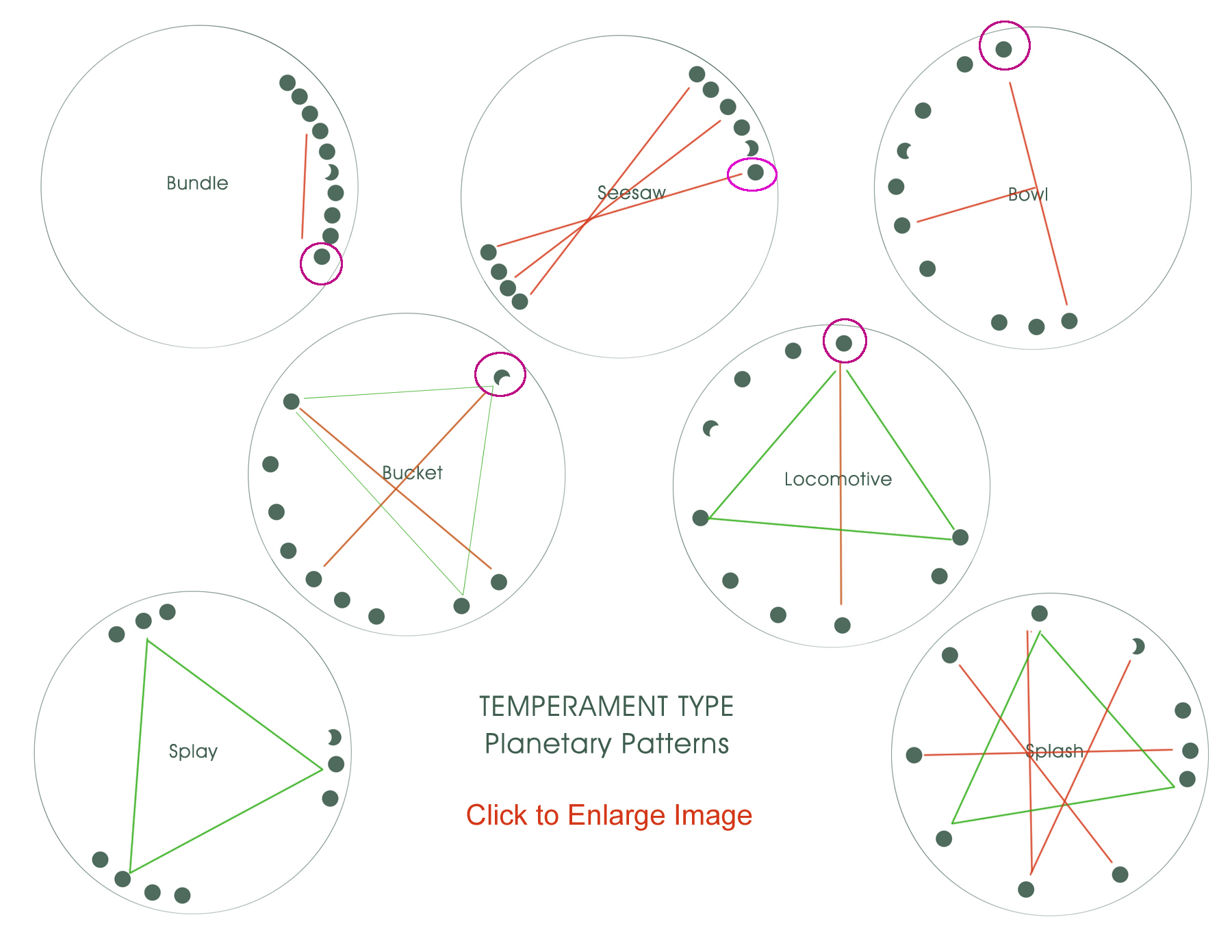Planetary Patterns form as planets aggregate in unique groupings while orbiting the Sun. Seen from the Earth’s perspective, these seven recognizable shapes are the matrix for the five major aspects in astrology, the Conjunction, Sextile, Square, Trine and Opposition. The patterns are in constant flux due to the varying speeds of the planets that constitute their foundations The three very slow-moving outer planets, Uranus, Neptune and Pluto, represent the base notes of the solar system so to speak and they chart the gradual development of evolving life on Earth. They identify the nature of humanity’s group orientations as they transform from religious and culturally cloistered pockets of activity which Jupiter and Saturn represent to a broader and more universal and all-inclusive conscious self-awareness. In some respects, they are the unconscious motivating forces at work in humanity’s evolution from darkness to Light. But for the seeker of life’s meaning they encourage an upward movement from subterranean levels of autonomic behavior to elevated and refined states of conscious being.
The outer planets are the pacesetters of consciousness transformation which then become the stable foundation of the universal mind within individual minds. In contrast, the swifter moving planets are associated with the more personal attributes of human character and point to habits of daily living and convenience. The diagram above shows examples of the ideal formations of the seven Planetary Patterns also known as Temperament Types. 
These seven basic Planetary Patterns represent humanity’s diverse modes of responding to life as a whole. They refer to human emotional and behavioral responses to local environmental stimuli and form attitudes about the conditions in the general world in time and space. To identify the way in which an individual is prone to view and respond to outer conditions one must identify the pattern of the planets in their particular horoscope. This can be challenging at times when the planetary groupings take on kaleidoscopic imagery as they move out of and into succeeding patterns. The mass of humanity is not born under ideal pattern conditions in the solar system when incarnating. But with a bit of analytical work on the chart, the Temperament Type can be identified and used as a tool to decipher the potentialities of personal response to circumstantial conditions.
The simplest transition from one pattern to another can be seen in regard to the Bowl shape as it morphs into the Bucket pattern. The Moon is the swiftest of the moving bodies as it cycles through the signs of the year (zodiac) each month. Its rapid speed allows it to play the role of the Handle of a Bucket pattern when it arrives diametrically opposite the Bowl segment. It becomes the Bowl Temperament once again when the Moon moves back into the more populated half circle Bowl congregate. The challenge in defining this Temperament comes when the Moon or other planet acting as the Handle is not quite perpendicular to the center of the Bowl. This idiosyncrasy is a condition that offers nuances in the interpretation of the Temperament Type. Chapter Two in The Essentials of Astrological Analysis describes the details and fine tunings of each of the seven patternings.
How do the planets and their electromagnetic fields relate to the morphogenetic field? The answer to this question is that they relate in every way. Ancient thought has always professed a belief and understanding of the reality and workings of invisible energy fields and their influence on organic life on Earth. This topic is now being revisited by Rupert Sheldrake, the controversial biologist who bravely goes where conventional science dares not enter. Sheldrake describes an ethereal and intelligent unified field that gives rise to visible form. As an astrologer, I would like to point out that it is the Sun, Moon and planetary fields that are the morphogenetic source and matrix itself, and the colorful graph of orbiting planets suggests how those individual fields might overlap and synergize. The field or plasma acts as an ever-developing potential. It is a molecular and chemical “instruction” for the building blocks of life. Observing life events and experiences in correspondence to planetary movements in a horoscope reveals an unseen binding relationship between the factors of event and planetary influence.
Our physical bodies resonate with the continuously altering solar system’s energy fields. They do so through our central energy system known by the Sanskrit term Chakras. The Chakras are circular and spiraling vortexes that have specific vibratory frequencies that instantaneously, through the ether or plasma, give substance to conscious self-awareness. These are the macro and micro elements of life in coalescence. All things vibrate with life energy and magnetism. The human body too exudes electromagnetic frequencies to take part in the complex play of forces in which we live and have our being.
Rupert Sheldrake’s horoscope is a Bucket pattern that deviates slightly from the ideal configuration. There is the necessary single planet s et off by itself that becomes the High Focus Handle of the chart, but the Bowl segment does not have a Delimiting Rim opposition to have it fit neatly into the ideal shape of a half circle.
et off by itself that becomes the High Focus Handle of the chart, but the Bowl segment does not have a Delimiting Rim opposition to have it fit neatly into the ideal shape of a half circle.
Although Marc Edmund Jones considers the Bucket Temperament Type to include those shapes where the bowl segment has no delimiting rim the departure from the ideal has led to the alternative title Funnel Temperament. This term expresses the way in which this temperament functions without a Rim. The term Funnel was made popular by the Humanistic branch of Astrology during the 1970s. When there is no Rim opposition the contents of the bowl, meaning the personal content of the native’s psyche, are unencumbered on their way to self-expression. The self-expression then is funneled directly to and through the nature of the Handle or Spout planet (see chart #1). This High Focus single planet with its sign and house placement is considered the point of release of talents that assist the native in the manifestation of his or her potentials. Here is where one develops a “handle” on the entirety of personal gifts and accomplishments and thus has a focused outlet for one’s purpose in life.
Sheldrake’s High Focus Moon is in the 2nd house of personal resources and in the sign of Discrimination. The Moon gathers and channels Sheldrake’s highly selective discoveries into the domain of his own personal psyche. Then the Moon’s exact opposition to the Sun in the 8th house offers others a share of the contents of his otherwise private worldview. Oppositions often show there will be times when his shared knowledge receives approval (8th house) contrasted with times of rejection from those who find it hard to comprehend the illusive nature of Sheldrake’s mission and message.
Note that Venus and Neptune buttress the funnel’s contents with a trine over the line of the sign. This allows the free-flowing nature of the 120-degree aspect to easily empty its contents  toward the High Focus Moon with its keyword INTENSE. The Core Opposition, shown with red lines, thus becomes more prominent in an interpretation because of the lack of distracting and challenging co-aspects. The Bucket or Funnel pattern identifies a person on a mission to accomplish. Sheldrake is certainly an example of one with an overwhelming drive to carry his cause to its final destination of public awareness of unseen forces. He accomplishes his mission through his revealing demonstrations of the subtle powers of receptivity that the Moon so well represents.
toward the High Focus Moon with its keyword INTENSE. The Core Opposition, shown with red lines, thus becomes more prominent in an interpretation because of the lack of distracting and challenging co-aspects. The Bucket or Funnel pattern identifies a person on a mission to accomplish. Sheldrake is certainly an example of one with an overwhelming drive to carry his cause to its final destination of public awareness of unseen forces. He accomplishes his mission through his revealing demonstrations of the subtle powers of receptivity that the Moon so well represents.
See Sheldrake’s demonstrations at: https://www.youtube.com/watch?v=XIozVT-IM14
The Temperament Type Graph below with the red and green lines shows that the Bundle has the possibility of a Trigger Square Focal Determinator and a High Focus Leading planet, shown with the red circle. The See-Saw ideally has both core and rim Oppositions and a High Focus Leading or Cutting planet. The Bowl has the potential for a T-cross Focal Determinator and has a High Focus Leading planet. The hemisphere occupation of planets also determines the degree of the Temperament’s personal development. The Bucket has the potential for both a Grand Cross and Grand Trine, with core and rim Oppositions – its Handle planet becoming Point Focus. The Locomotive has the possibility of a Grand Trine, a core Opposition and High Focus Leading planet. The Splay is based on the Grand Trine, but can have a T-cross and High Focus Reins planet when there is only one planet in one of the three segments. The Splash has the possibility of having all quadratures represented by as many as 5 Oppositions. There can be a Grand Trine, Grand Cross, T-cross, but no Leading planet. For more detailed information on Temperament Types, read The Essentials of Astrological Analysis by Marc Edmund Jones. Chapter 2, page 27.


